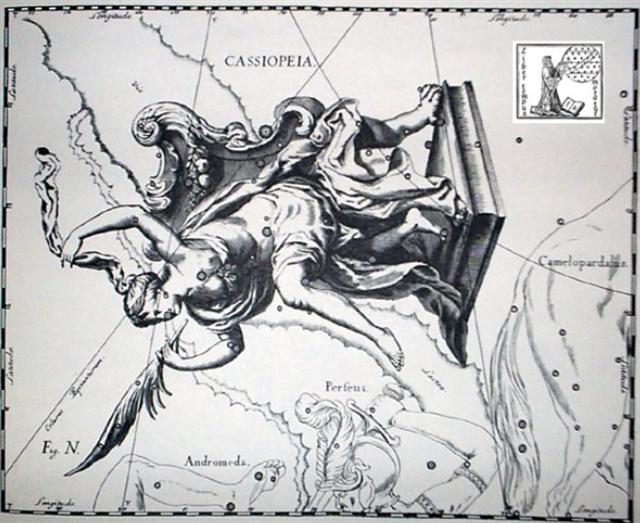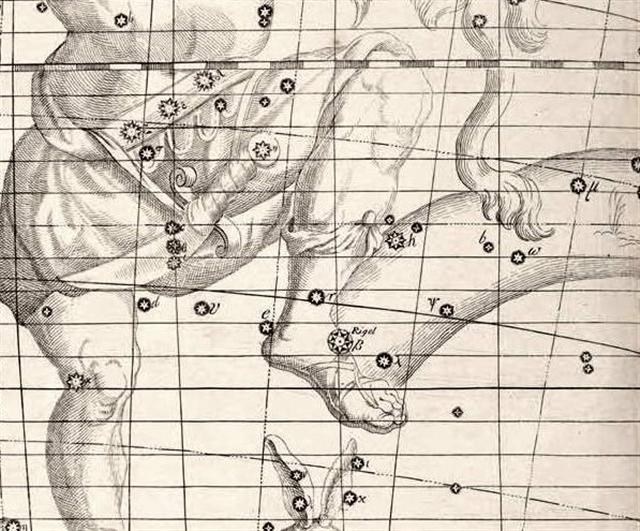Clearly the reversal of hau tea in Gb5-1 identifies where the lunar year is ending, and this offers us one of most secure readings in the text:
50 weeks equals 350 nights, and according to my colouring scheme for numbers the last 'ordered' night (354) would then be a Saturn-day, with the following extra night a day of Venus - when, presumably, the next year will be generated. (Night number 1 is ruled by Mercury and thus also night number 350, and counting 3 nights ahead: Jupiter, Venus, Saturn, implies both night number 4 and night number 354 will belong to Saturn.) However, the G text does not describe it thus. Instead, there evidently are 4 dark nights of birth, ending with mauga in Gb5-4 (also a 'Saturday') coinciding with the last 6 stars of the Pleiades (Tau-ono). The Arabic manzil year is here reaching its final with Alrescha 15, and we realize this type of solar year perhaps has 364 regular days + 1 extra. 364 / 7 = 52 and the mauga type of glyph (in Gb5-4) means 'invisible' (hidden behind the Mountain). The extra day is not a day of Venus but a day of Mercury (if my colour scheme applies also for the manzil days). Considering the fact that there are 229 glyphs on side a of the tablet and recognizing the equation 136 + 229 = 365 we can assume the creator if the G text tried to give us the key for transforming the Gregorian day numbers to manzil day numbers (or the other way around). For instance was 'May 16 posssible to count either as day 136 (Gregorian) or as 136 + 229 = 365 (Manzil). The reversed hau tea in Gb5-1 is exactly the same as the previous one in Gb4-1, 33 nights earlier:
Presumably these 33 nights refer to the same kind of extended solstice periods as on Hawaii: ... in the ceremonial course of the coming year, the king is symbolically transposed toward the Lono pole of Hawaiian divinity ... It need only be noticed that the renewal of kingship at the climax of the Makahiki coincides with the rebirth of nature. For in the ideal ritual calendar, the kali'i battle follows the autumnal appearance of the Pleiades, by thirty-three days - thus precisely, in the late eighteenth century, 21 December, the winter solstice. The king returns to power with the sun ... These 33 days occured before the solstice, but the Hawaiians looked for the Pleiades in the evening, whereas south of the equator the Pleiades (the last 6 of them) were probably looked for in the early mornings. At the time of G there were ca 36 days (= 172 - 136) from Alrescha 15 to the southern winter solstice, which is the same distance as that from Ksora (δ Cassiopeiae) to Alcyone (η Tauri). 56.1 - 20.1 = 36.0). Perhaps this explains why north of the equator people saw 7 stars in the Pleiades - they did not count Pleione and Atlas because they rose later than Alcyone. Hevelius has his Queen falling forward on her face. The constellation is close to the pole and therefore his projection is distorted compared to that of a modern star chart, which makes it hard to discern where Ksora is. However, Allen says it is at her knee - which is appropriate for there certainly has to be a joint between the regular 'bones' of time.
With day 355 defined in the text it is easy to perceive that tagata in Gb5-6 is marking day 5 * 6 * 12:
But not counted from 'January 1 but from 'May 24:
When the manzil day number is smaller than the Gregorian the key number is not 229 but 136. For instance was 'May 24 either possible to see as day 8 (Manzil) or as 8 + 136 = 144 (Gregorian). The gap between Hyadum I and Hyadum II is in our time ca 0.8 days. These twin stars would have been at equinox around (144 - 80) * 72 = 4600 years ago (compared to the time of G). Beyond Sheratan 8 (perhaps alluding to the dark nights before Venus returned as morning star) lots of fishes are rising:
Perhaps the extra night Sheratan 14 in a way corresponds to an extra day 'May 30 in the Gregorian calendar. Julius Ceasar did not add any day to Maius, it already was 31 days long. But the old Roman calendar reached night 91 (= 31 + 29 + 31) with Maius 31. Therefore the extra night Sheratan 14 could correspond to the 'corner' beyond 360 / 4 = 90. From the numbers in Gb5-18 we can count 51 * 8 = 408, alluding to the glyph preceding Rogo in Gb6-26. The moa in Gb5-19 has no eye (the ring in his head is his eye socket) and he is flanked by a pair of fishes, each with a 'feather' ('fire') inside - i.e. not visible. The position is 7 days beyond 'May 144 (and the Hyadum 'gate').
May 30 is day 31 + 30 + 30 = 91 counted from March and 59 + 91 = 150. Pleione 1 is the first night beyond this 'joint in time' and the star Pleione is the first beyond the 7 in the Pleiades. If Sun has 300 days, then there should be a 'joint' in day 150 (Gregorian). In Gb5-21 a little hau tea is at bottom left, this was day 73 from the solstice. Gb5-22 is the same as Gb5-17, possibly indicating the 4 glyphs between are outside the regular calendar. 74 - 4 = 70.
The glyph type at Gb5-24 is hakaariki (to make a king), possibly something which should be done at 5h. The Haedus twins once were at equinox, around (156 - 80) * 72 = 5500 years ago. The position 378 from Gb8-30 suggests a connection with the synodical cycle of Saturn. λ Eridani, close to the left foot of Orion, could mean it was time to 'make a king' because Orion was regarded as a king. If so, then the triplet in Gregorian day 156 (= 12 * 13) possibly refers to Tau-toru (the Belt of Orion).
Rigel Orionis is very close to λ Eridani and it rose heliacally 78 days after equinox, a measure which in ancient times probably was regarded as the same measure as 780, especially if the zero had not yet been invented. The synodical cycle of Mars is 780 days.
Another time limit was probably defined by 13 * 29½ = 383½, which could explain the missing head in Gb5-29:
|

















